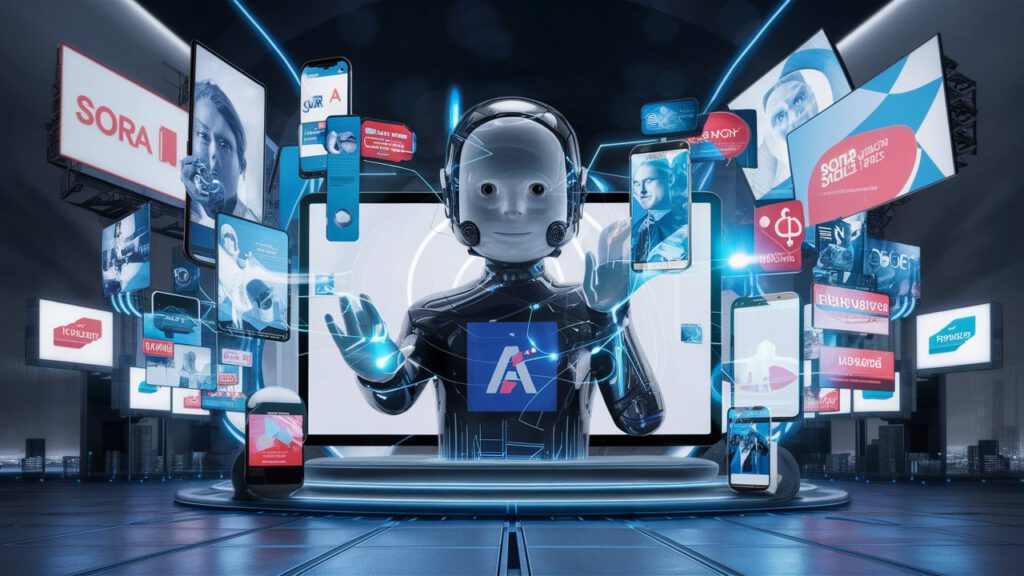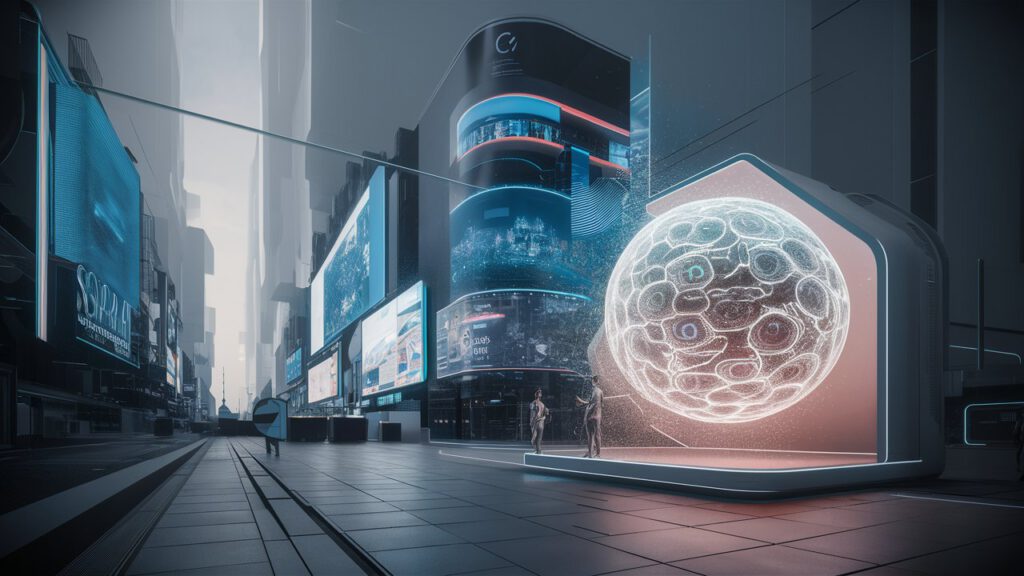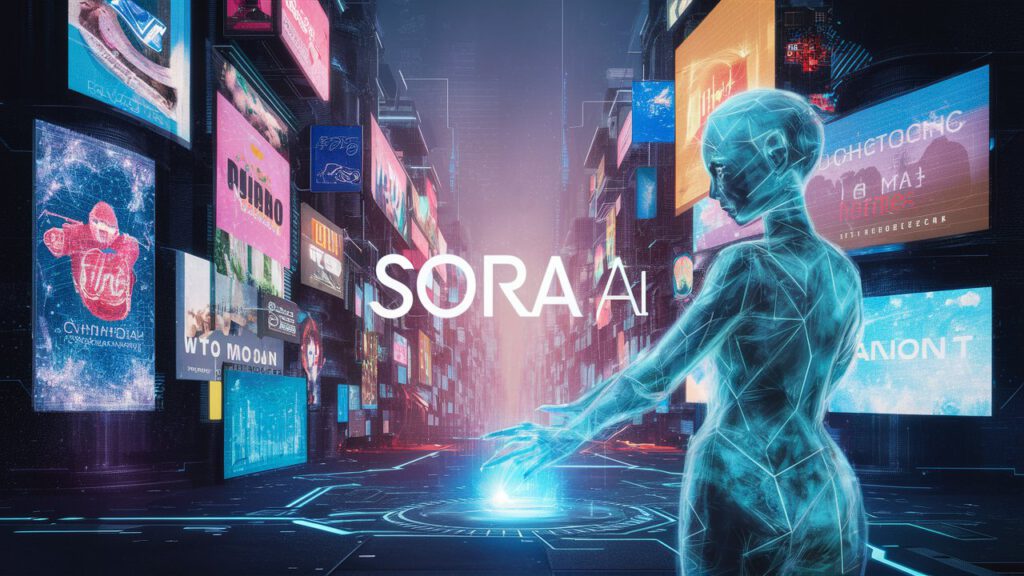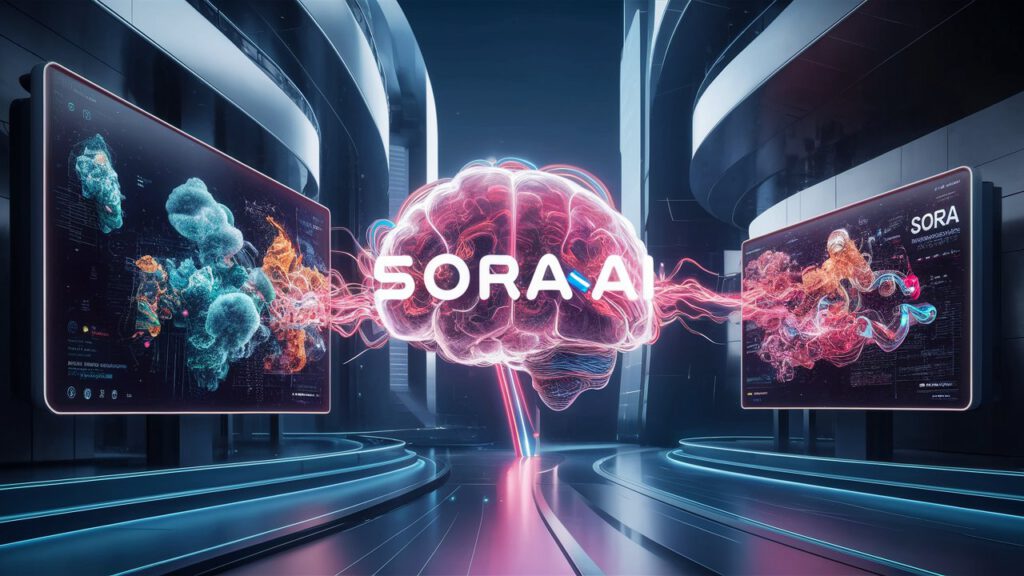Table of Contents

Sora AI is a new technology that’s changing how we think about video creation. It could have a big impact on digital advertising. Let’s explore how Sora might change the world of online ads.
What is Sora AI?
It is an AI tool made by OpenAI. It can create videos from text descriptions. You type what you want to see, and it will makes a video of it. This is very different from how we usually make videos.
How Sora Could Change Digital Advertising
1. Faster Ad Creation
Making video ads takes time. It could be much quicker. Advertisers could type out their ideas and get a video in minutes. This speed could help brands respond to trends faster.
2. Lower Costs
Video ads can be expensive to make. You need cameras, actors, and editors. It could lower these costs. Companies might not need as much equipment or as many people to make video ads.
3. More Personalized Ads
It could help create personalized video ads for different customers. Imagine sending each customer a video ad made just for them. This could make ads feel more personal and relevant.
4. Easier A/B Testing
A/B testing means trying different versions of something. The advertisers could easily create multiple versions of a video ad. They could test which one works best with their audience.
5. More Creative Freedom
Sometimes, ad ideas are hard to film in real life. They might be too expensive or impossible. It could bring these ideas to life. This gives advertisers more creative options.
6. Quicker Ad Updates
Products and services change often. Updating video ads to match these changes can be slow. It could make it easier to keep ads up-to-date.
7. Multilingual Ads
Creating ads in multiple languages is challenging. Sora might be able to generate video ads in different languages easily. This could help brands reach global audiences better.
Potential Uses of Sora in Digital Advertising

1. Product Demos
It could create video ads showing how products work. These could be customized for different uses or customers.
2. Explainer Ads
Complex products or services could be explained with custom animations. It could create these based on text descriptions.
3. Social Media Ads
Short, eye-catching video ads are important for social media. It could help create a steady stream of fresh ad content.
4. Customer Testimonials
While real customer videos are important, it could create scenarios showing potential customer experiences.
5. Brand Stories
Companies could use Sora to bring their brand history or values to life in video ads.
6. Seasonal Campaigns
Sora could quickly create video ads for different seasons or holidays. This could help brands stay relevant year-round.
7. Location-Based Ads
It might create video ads tailored to specific locations. This could make ads more relevant to local audiences.
How Sora Could Change Ad Strategies
1. More Video Ads
As video ads become easier to make, we might see more of them. Brands that didn’t use video before might start.
2. Faster Response to Trends
Brands could create video ads about current events or trends very quickly. This could make ads feel more timely and relevant.
3. More Targeted Campaigns
With easier video creation, brands might make more specific ads for smaller audience groups. This could lead to more effective targeting.
4. Continuous Testing and Improvement
It would be easier to try many versions of an ad. Brands could constantly test and improve their video ads.
5. Integration with AI Analytics
It could work with AI analytics tools. This could help create ads that are more likely to perform well.
6. New Ad Formats
It might enable new types of video ads we haven’t seen before. This could change how we think about online advertising.
7. Influencer Marketing Changes
It could change how brands work with influencers. It might be used to create virtual influencers or enhance real influencer content.
Challenges and Concerns

While it may offers many possibilities, there are also challenges:
1. Ad Authenticity
Viewers might question if ads are real or AI-generated. Brands will need to be transparent about using AI.
2. Oversaturation
If video ads become too easy to make, we might see too many of them. This could lead to ad fatigue among viewers.
3. Quality Control
It can create videos quickly, ensuring high quality might still take time and skill.
4. Creative Jobs
Some worry that AI might replace creative jobs in advertising. However, it’s more likely to become a tool that helps creatives.
5. Ad Platforms Adapting
Platforms like Facebook and Google might need to change their ad systems to handle AI-generated content.
6. Regulatory Issues
There might be new rules about using AI in advertising. Brands will need to stay informed about these regulations.
7. Ethical Concerns
Using AI to create highly persuasive ads raises ethical questions. Advertisers will need to use this technology responsibly.
How Advertisers Can Prepare for Sora
1. Learn About AI
Understanding AI technology will be important. Advertisers should start learning now.
2. Develop New Skills
Writing good prompts for AI will be a valuable skill. Advertisers should practice this.
3. Think About Ethics
Consider how to use AI responsibly in advertising. Develop guidelines for your company.
4. Stay Flexible
Be ready to change your ad strategies as AI technology develops.
5. Focus on Creativity
While AI can help create ads, human creativity will still be crucial. Focus on coming up with innovative ideas.
6. Keep the Human Touch
Remember that customers value authenticity. Find ways to keep your brand’s human side even when using AI.
The Future of Advertising with Sora

Similar AI tools could lead to big changes in advertising:
– More personalized and relevant ads
– Faster creation and testing of ad campaigns
– New types of video ads we haven’t seen before
– Changes in how ad agencies and marketing teams work
– More integration between AI and human creativity. However, the core principles of good advertising will likely stay the same. Understanding your audience, having a clear message, and being creative will still be important.
Frequently Asked Questions
Q1: When will Sora be available for advertisers to use?
A1: As of early 2024, Sora is not yet publicly available. OpenAI hasn’t announced a release date.
Q2: How much will it cost to use Sora for advertising?
A2: Pricing hasn’t been announced yet. It will likely depend on factors like video length and complexity.
Q3: Will ads created by Sora look artificial?
A3: The quality is improving rapidly. While not perfect, many AI-generated videos look quite realistic.
Q4: Can Sora add branding elements to video ads?
A4: This will likely be possible, but the exact capabilities are not yet known.
Q5: Can Sora create ads in different languages?
A5: While not confirmed, it’s likely that Sora will be able to create videos in multiple languages.
Q6: How will Sora impact advertising budgets?
A6: It could potentially reduce costs for some types of video ads, but the exact impact will vary by company and use case.
Conclusion
Sora AI represents a big shift in how we can create video content for advertising. It offers exciting possibilities for faster, cheaper, and more creative ad production. However, it also brings challenges around quality, ethics, and authenticity.
The future of digital advertising with looks dynamic and innovative. Advertisers who embrace this technology while maintaining human creativity and ethical standards will likely succeed. As we move forward, the blend of AI efficiency and human insight will shape the next era of digital advertising.

Rob Williams is a tech enthusiast and digital content creator with a passion for emerging technologies. With over five years of experience in the field of digital marketing and content production, Rob has been closely following the developments in AI and its applications in media creation. When not writing about the latest in AI, Alex enjoys experimenting with new digital tools and sharing insights with the online tech community.